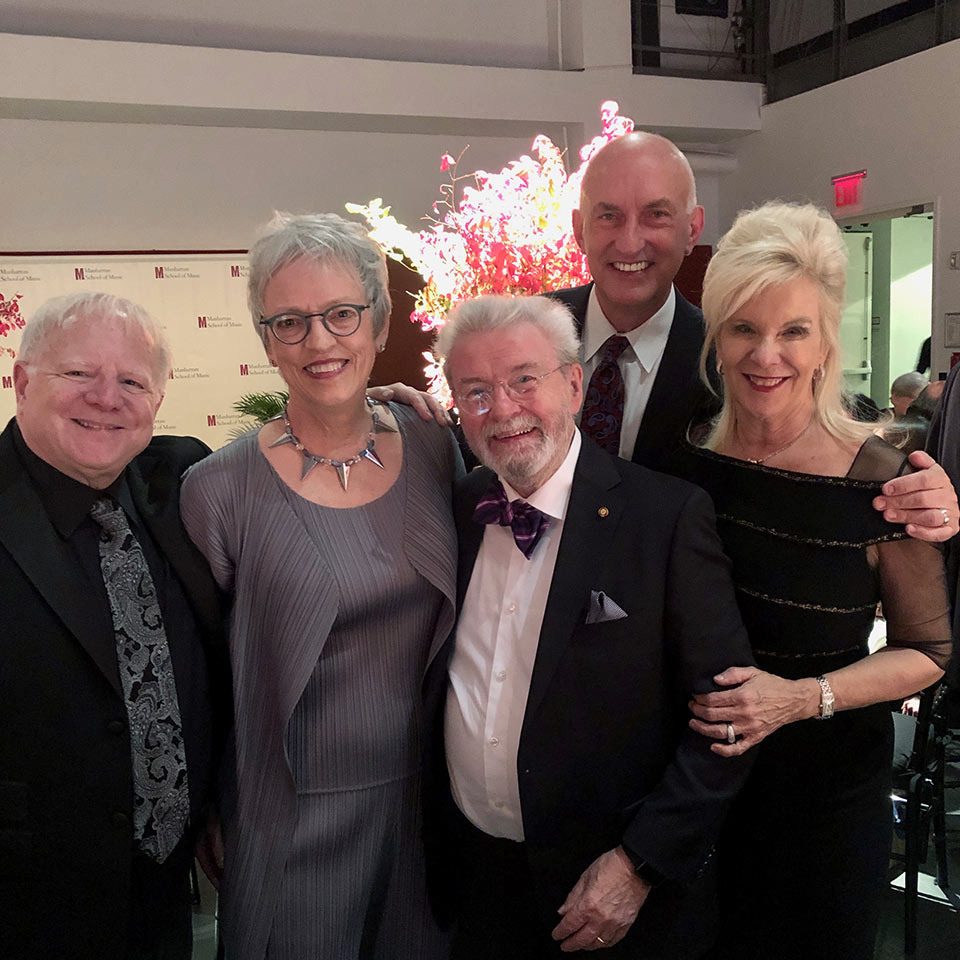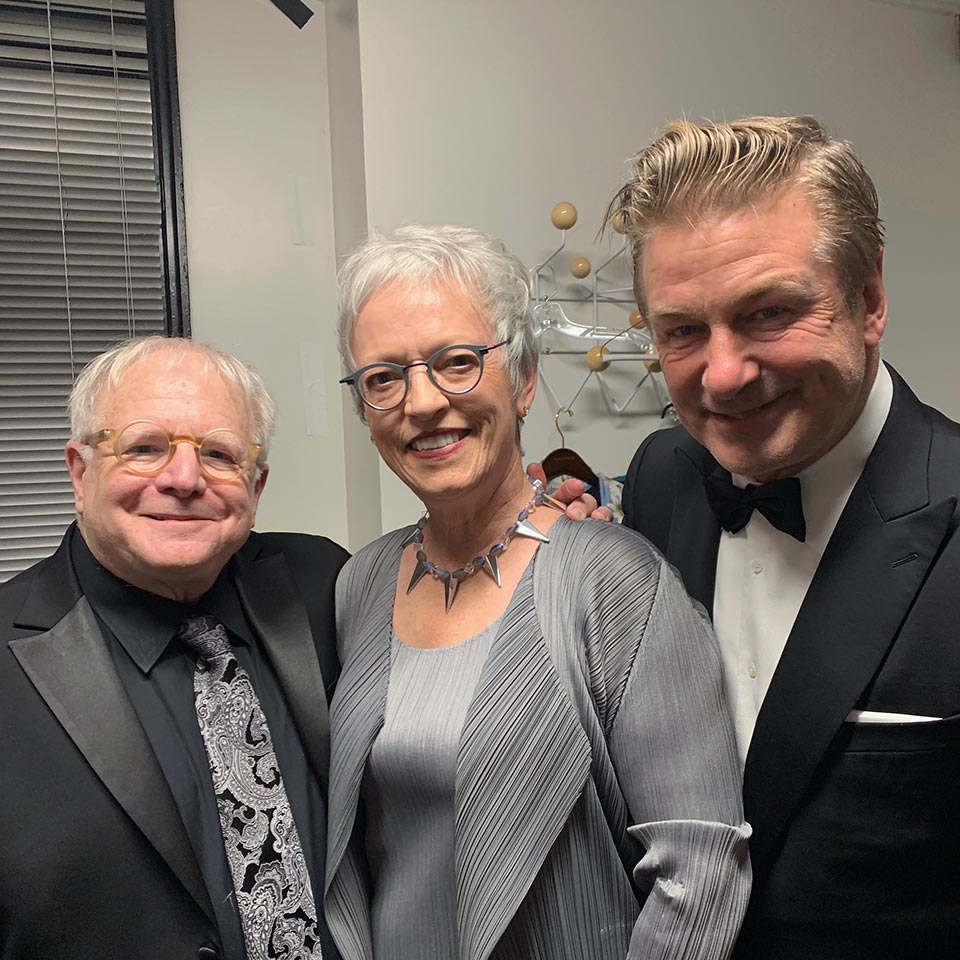Journeys unknown and paths less taken were part of last month’s itinerary. After a leisurely jaunt through most of Ireland, it was back to work in a very unusual setting. But there were also visits to the familiar and celebrations to be had.
Being on the freelance circuit has some built-in advantages. For me, it is an opportunity to drop into parts of the musical world I have never seen as well as traverse long-desired destinations. Ireland was certainly one of those, but it was also a chance for Cindy to connect with a large part of her family heritage.
Conducting orchestras with which I have no familiarity is also part of the long-range plan. My European agents suggested a visit to the small town of Künzelsau, where a two-year-old ensemble called the Würth Philharmonic performs. I checked with a couple other musician friends who said it was a worthwhile experience and took the date in this unusual place in Germany.
***
Although centuries old, Künzelsau now is the major production center for screws. I know, it sounds silly, but look around you. Those little and large rivets cannot be escaped. Reinhold Würth and his wife Carmen care so deeply about the arts that they are willing to back up their feelings with actual projects that bring cultural riches to an entire city. The population of Künzelsau is 15,000 people, with most working for the company. It was the Würths’ intention to inject their passion into the lives of all who inhabit the city.
The Würths established several museums, showing off almost 1,500 works of art. They set up aid societies for children. And they built a concert hall, named after Reinhold’s wife. All the concerts are sold out. The members of the orchestra come from different parts of the world, but the musical emphasis leans toward the standard repertoire. For a new ensemble, this makes sense.
My program contained two staples of the German canon: Euryanthe Overture by Weber and Robert Schumann’s Third Symphony. It was clear from the first rehearsal that everyone had come prepared and that this would be a wonderful experience for me. The acoustics of the hall were warm, but since it is not a large space, seating only 500 people, there was also a kind of dryness as well. However, it was certainly possible to hear clearly, and that always makes rehearsing easier.
Kirill Gerstein joined us for the Gershwin Piano Concerto. It is interesting to see how this piece is constantly evolving, both for soloists and orchestra musicians. The technical challenges are usually not a problem, but how to treat the jazz-tinged elements can be difficult. Having grown up in Los Angeles with my parents part of the Hollywood scene, I had a kind of insider’s view of the style. Still, the work at hand is a concerto, and certainly whoever is playing the solo part should find their own way with the approach to this groundbreaking piece.
Kirill improvised a little bit, both in cadenzas and by adding little flourishes along the way during passages with orchestra. Most of it worked very well, and he certainly had the audience excited, with the crowd giving him a prolonged ovation after the first movement. The orchestra kept up and seemed to get all the little suggestions I had for playing things that are not written. I am not talking about notes, but rather how the rhythms are interpreted. It is usually my practice to tell them all to watch a couple of Fred Astaire films, but these days, that elegant gentleman is unknown to most musicians in the orchestra.
After a somewhat grueling set of flights, we arrived back in St. Louis. The Cardinals were on a roll, having gotten into the playoffs, and there was an air of destiny in the now-chilly temperatures of October. It was 51 years ago that I first came to the city as the orchestra’s assistant conductor. Even though my birthday was more than a month ago, this set of concerts would be my little present for everyone.
As self-serving as it might seem, I chose the big Strauss tone poem Ein Heldenleben as the main offering on the musical menu. The hero is the composer, not me, and this work was one that the St. Louis Symphony had made its own while I was music director. We took it on tour to Europe, including Germany and Vienna. Talk about bringing coals to Newcastle. It was in Vienna that then-Associate Concertmaster David Halen took over the demanding solo role at the last minute. When the actual leader decided to step down, I went to the orchestra committee and we circumvented the usual audition procedure. David sits in that chair to this day, and listening to his heartfelt representation of Strauss’s wife was moving on so many levels.
And the orchestra was magnificent. The whole week went by quickly, with everyone attentive and truly into the music. In some ways, Heldenleben is the easiest of the Strauss tone poems to conduct and play. My main job is to make it all hang together over the almost 50 minutes of music. But everybody has something to do in this work, and it is so well-written that all orchestra musicians love to play it. Special kudos to English and French horn soloists Cally Banham and Roger Kaza for extraordinary musicality during this adventure.
The spotlight soloist was the orchestra’s principal oboist, Jelena Dirks. This very talented young musician brought a sense of elegance and good taste to the Mozart Oboe Concerto. The program book noted that, believe it or not, this was the first time the SLSO had played the work. Since it also exists in a version for flute, in some ways the piece had been performed previously, with me conducting, but this was the first outing for the double reed version.
Opening the concert was the first of five performances that will take place this season of Yet Another Set of Variations (on a Theme of Paganini). Rather than go into too much detail, here is the program note I wrote for the piece:
In 1996 I gave my final concert as music director of the St. Louis Symphony. For the occasion, we asked the four composers who were in residence during my tenure to write a variation on the famous theme from the 24thCaprice by Niccolò Paganini. Joseph Schwantner, Joan Tower, Donald Erb and Claude Baker each offered a different take on the tune. In addition, William Bolcom and I contributed short interpretations of our own.
Although the idea for several composers to create a single variation intended to be performed alongside other arrangements was new, the original theme is probably the most popular classical music tune to be subjected to various treatments. Indeed, Brahms, Schumann, Lutosławski, Blacher, Rachmaninoff and even Andrew Lloyd Webber have all turned to Paganini for inspiration.
As I approached my 75th birthday, it occurred to me that expanding on this idea from 23 years ago would be a nice way to celebrate. I invited five orchestras where I have held a position of artistic leadership to commission five composers with whom I have shared a close collaboration over the course of my career. Specifically, the St. Louis Symphony invited John Corigliano to contribute a new variation, as it was with that orchestra that I first conducted and recorded John’s music. Composer Truman Harris served as assistant principal bassoon in the National Symphony Orchestra and assisted me in orchestrating several works I wrote for that ensemble. Guillaume Connesson was resident composer with the Orchestre National de Lyon during my tenure. Cindy McTee, aka Mrs. Slatkin, was closely associated with the Detroit Symphony Orchestra. Daniel Slatkin is my son and a composer for motion pictures and television. His variation was commissioned by the Nashville Symphony, one of the most active recording orchestras in the country.
Putting all 11 variations together to form a single piece was not an easy task. I wound up writing an introduction as well as some connective material to cover setup changes in the percussion section. I determined the performance order with an eye toward balancing the serious pieces with the outrageously humorous ones. I am grateful to the various publishers for allowing their composers to sit next to each other in the same work, and to the commissioning orchestras for supporting the project.
A word about my own variation is in order. When I wrote it in 1996, I tried to take an element of each composer’s style and incorporate it into a finale. With five new authors in the mix, I needed to create additional passages so that all 11 contributors would be represented. Most of this material is intended as a little tribute to my friends who so graciously participated in the celebration of this three-quarters-of-a-century milestone. If you keep in mind that my son writes for film and television, Connesson is French, and Harris is a bassoonist, I think you will catch on.
It turned out to be 20-minutes long, and everyone seemed to think it turned out well. Whether or not it lives beyond the initial run of performances is to be determined. There are issues of publishing rights and other things that could be tricky. But at the very least, audiences heard 11 composers in a very short span of time.
The birthday party continued in New York, quite literally where my conducting life truly began. In 1964, at the age of 20, I entered the Juilliard School of Music on the Irving Berlin Scholarship. A few years later, the school would move downtown to Lincoln Center, but I always had my feet firmly planted on 122nd Street and Claremont. It is now the home of the Manhattan School of Music, and until last year, the auditorium where concerts are held was exactly as it was when I studied there.
There are still a few remnants of the old building, and walking through the doors still gives me the shivers. Especially during this week, as I was leading a program of works associated with my family and me. As with the above Variations, it is more informative for me to direct your attention to this review, which captures a great deal of what occurred during the concert:
“Leonard Slatkin conducts the Manhattan School of Music Symphony Orchestra, celebrating his 75th Birthday with a concert featuring works by him and members of his family”
Friday, October 18, 2019 Neidorff-Karpati Hall, Manhattan School of Music, New York City
Reviewed by David M. Rice for Classical Source
Many luminaries of the classical music world were among those gathered in Neidorff-Karpati Hall to honor Leonard Slatkin, whose 75th birthday concert launched the ‘MSM Icons’ series at the Manhattan School of Music, where he is a Distinguished Visiting Artist. Slatkin conducted the MSM Symphony Orchestra in a program comprised of works connected with significant milestones in his career and with members of his family.
To commemorate two of his conducting debuts, Slatkin began with William Schuman’s New England Triptych, the first work he conducted at Carnegie Hall (1966), and Mikhail Glinka’s Kamarinskaya, the first piece he conducted at the Juilliard School (1968) – on the same stage as tonight’s performance. The MSM musicians responded brilliantly to Slatkin’s direction, with Juhyun Lee’s wonderful clarinet solo in the Glinka a standout among many fine individual contributions.
The highlight of the evening was Slatkin’s own composition, The Raven, a setting of five poems by Edgar Allan Poe, superbly recited by the eminent actor Alec Baldwin and excellently played. Each of the first four poems features a different section of the orchestra – winds in ‘The Sleeper’, percussion in ‘The Bells’, strings in ‘Romance’, and brass in ‘The Coliseum’. Each section is preceded by chimes and the recitation of “Once upon a midnight dreary”, the opening line of ‘The Raven’. Baldwin captured the spirit of each poem, particularly the maddening tintinnabulations of ‘The Bells’, speaking – and at moments shouting – as the percussion chimed. Finally, for Poe’s most famous poem, ‘The Raven’, Slatkin employs the entire orchestra, alternately juxtaposing a single solo instrument from one section against the ensemble of the others. Baldwin artfully portrayed the narrator’s torment as the eponymous bird perches above his chamber door, repeatedly intoning “Nevermore”. At its conclusion, the members of the orchestra speak that word repeatedly – whispering at first, and then growing louder to match the orchestral crescendo. Finally, Baldwin once again recited “Once upon a midnight dreary”.
The balance of the program reflected four generations of Slatkin’s family. ‘A Soldier Song’, a short composition by Modest Altschuler, who founded the Russian Symphony Orchestra in New York in 1903, supported Slatkin’s observation that his great-uncle was probably a better conductor than a composer. Slatkin’s brother, cellist Fred Zlotkin, performing on the instrument that their mother, Eleanor Aller, played in the storied Hollywood String Quartet, gave a delicate, atmospheric rendition of Ravel’s ‘Pièce en forme de habanera’.
Sir James and Lady Galway performed at the 2011 wedding of Slatkin to composer Cindy McTee, who thanked the Galways with an arrangement for two flutes of the folk song ‘Shenandoah’. They played it gorgeously here on their 18-carat gold flutes, Sir James voicing the famous tune and Lady Galway providing harmony and counterpoint, all set against McTee’s lovely orchestral accompaniment.
Representing the youngest Slatkin generation was In Fields, composed by Leonard’s son Daniel as a tribute to his father on the occasion of his retirement as Music Director of the Detroit Symphony Orchestra. Daniel, like a number of his ancestors, is establishing a career in the film industry, with several film scores already to his credit, and In Fields evidences his considerable talent for melodic invention and imaginative scoring. The predominantly pastoral work showed off the excellent MSM strings and featured fine solos by Ellen O’Neill on oboe and Joshua Gomberoff on viola – the latter particularly appropriate since Leonard Slatkin had played the viola in his younger days.
The final tribute of the evening was for Leonard Slatkin’s father, Felix Slatkin, who had a brilliant career as violinist and conductor. He was concertmaster of the Twentieth Century Fox Studios, where he met and married cellist Eleanor Aller, with whom he formed the Hollywood String Quartet. He also founded and conducted the Concert Arts Orchestra and served as concertmaster and conductor for Frank Sinatra. He arranged and recorded dozens of whimsical short works based on classical and popular sources, and the concert concluded with three of these works. Although many of Felix’s scores were destroyed or lost, Cindy McTee created transcriptions of his arrangements of ‘Fisher’s Hornpipe’, a traditional Irish fiddle tune, and ‘Wistful Haven’, adapted from Dvořák’s ‘New World’ Symphony. In an even more light-hearted vein is ‘Carmen’s Hoedown’, which folds themes from Bizet’s opera into a western barn dance. It was given a rousing performance that put an exclamation point on the evening. Slatkin was effusive in his thanks to those who had come to honor him, and the audience returned the favor with a long ovation, recalling him to the stage several times.
***
So many friends and family showed up for this event, and I was touched beyond belief. Some of them were former classmates at Juilliard, and others were musicians whom I have known throughout my career. Making it all possible were Noémi and Michael Neidorff. It is her mother whose life is celebrated in the renaming of the new Neidorff-Karpati Hall. And of course, at the helm of the event was MSM President Jim Gandre, who is creating something quite remarkable and comforting in this bastion of music training.
***
***
In addition to the concert, I did some teaching and lecturing, and Cindy and I attended a fine performance of Porgy and Bess at the Metropolitan Opera. David Robertson led the excellent cast and chorus with a fine sense of the drama of the work. Jim Robinson made the huge stage seem small and intimate when needed. David and his wife, Orli Shaham, were among those who came to my concert, as well as my good friend Gerard Schwarz and his wife, Jody.
Various lunches and dinners occurred, and I was happy to have enough free time to catch up with friends and family on this trip. In particular, my brother, Fred, is always fun to see and be with. But I refused to root for the Yankees, as the Cardinals imploded and did not make it to the World Series. At least the Nationals got there, and one of my music director cities was represented in the Fall Classic. Or perhaps, since it now extends into the end of October, it should be called the Winter Paradigm.
Now, after a fairly calm week off at home, I head back east for the month of November. Lots of things to do in New York State as well as my first trip to Detroit this season.
See you next month,
Leonard


